What bimetallic radiators are better: types of products and
The market of radiators is replete with goods for any purse, for various features of the heating network, the delicate taste of buyers is also taken into account. There are aluminum, cast iron, steel, bimetallic heaters, but today we will be interested in bimetallic. Bimetals - constructions that fit the heating system in the best possible way, and why and what bimetallic heating radiators are better, let's try to understand in detail.
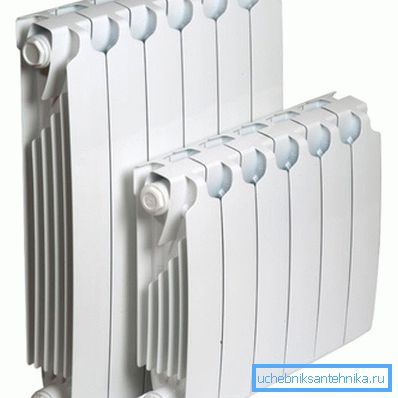
Change cast iron
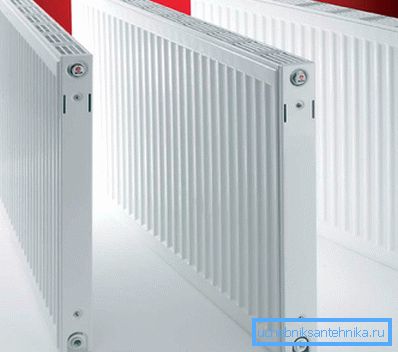
Countries where the term “water hammer” can be learned only from the specialized literature have long changed cast iron with more modern aluminum and steel:
- Aluminum radiators almost completely repeated the design of the usual cast-iron batteries, the same fins, nipple connections and excellent characteristics in the ability to withstand pressure, service life and heat transfer performance;
- Steel panel heaters - cheaper and less durable, withstand a slight pressure in the network. But they were developed for cottages and houses with autonomous systems and little pressure in the network.
Bimetallic radiators are more likely a solution for distressed heating networks than innovations. The dubious quality of the coolant with pH in the alkaline range also does not add optimism about the possibilities of using aluminum and steel. At the output we get:
| Features of domestic heating systems | Aluminum: reaction | Steel: reaction |
| Water hammer due to overpressure | Aluminum holds the pressure in the network, and not worse than cast iron, but sudden drops themselves can deform the soft metal. | Steel structures over 9 atm will not pull any pressure surge and the water hammer will break radiators |
| State of coolant (presence of alkali) | Aluminum very badly tolerates aggressive media, especially those that are different from neutral pH. | Steel calmly maintains various additives in the coolant. |
This created the prerequisites for the creation of a new product that would boldly and firmly withstand all the challenges of domestic heating systems.
Bimetallic products have high performance.
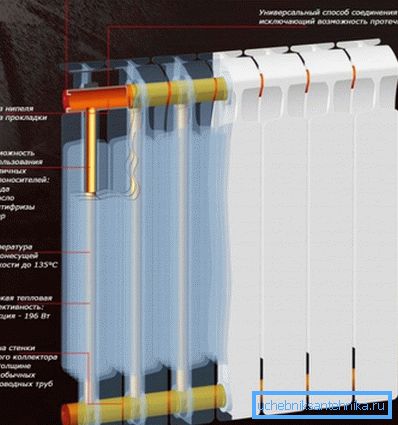
The change of cast-iron heaters with modern analogues suggested not only adapting to the conditions and whims of our networks, but also more economical consumption of heat-transfer agent, subject to increased heat transfer. The solution was found, bimetal radiators were created.
Our help! In fact, bimetals are a system of steel pipes, sealed into an aluminum conglomerate. The main thing is that aluminum does not conflict with an aggressive coolant and does not perceive water impacts when connecting the system after accidents or during inspections at the beginning of the heating season. A small decrease in power is due to the difference in the heating of steel, aluminum, but even this difference in output gives more power than cast iron.
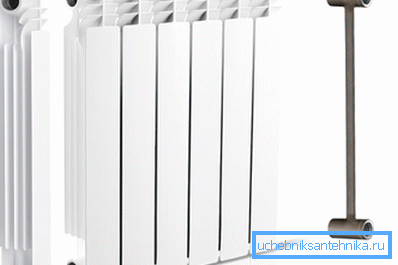
Types of products
A comparison of bimetallic radiators of heating shows that price is a direct indicator of product quality, product rating. And the rating of bimetallic radiators of heating is directly dependent on the quality of the “core” - the metal pipe.
The circle is closed.
Consider the quality:
- Pseudobimetals. As it turned out, something metallic in them. Speaking more seriously, metal tubes do exist in them, but only as connecting elements of two channels: the upper main and the lower. These channels, like the body of the links, are aluminum. It is not difficult to imagine what will happen with them during prolonged contact with our coolants, as well as with serious water hammer.
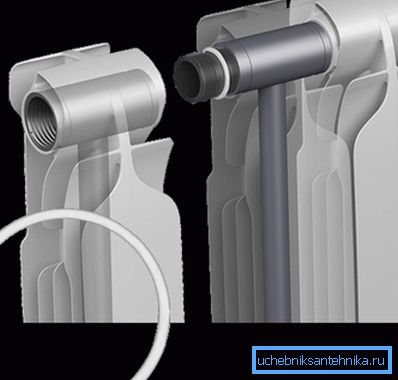
For information! Bimetallic radiators are ahead of their aluminum counterparts in price policy. The cost of a home network with an autonomous boiler will be less expensive if, instead of a bimetal, you install ordinary aluminum links, and better steel panels, and do it yourself. And do not cast iron discounted. Modern cast iron products look very beautiful. Installation and assembly of such radiators is identical to bimetallic ones, only the cast iron products are heavier.
- Full metal frames and aluminum lining;
- The frame is not just full, but made of stainless steel, These are the best bimetallic radiators.

Our help! Comparison of bimetallic radiators shows that the most reliable and durable will be heaters with a stainless steel core, they will lead the ranking of the best bimetallic radiators of heating. The stainless steel will cope with two main problems of our networks: pressure surges and alkaline fillers. Aluminum will quickly heat up and quickly give off heat. The only problem is to correctly calculate the number of sections, but the store will do it for you.
Practical etudes
Practice shows that it is important not only to choose the best bimetallic radiator of heating, but to choose an adequate radiator that will last a long time, and will produce the required number of calories, and will not drag you into financial bondage. Let's start to compare
| Type of radiator | Heat emission, W | Pressure, atm | Lifetime, year | Weight, kg |
| Cast iron | Up to 150 | 15 | 35 | To 7.5 |
| Aluminum | 190 | sixteen | 25 | Up to 1.5 |
| Bimetal | 200 | 35 | thirty | Up to 2 |
| Steel | 450-5700 | 9 | 20 | Before 18 |
Note! All values are given in the maximum range. For steel radiators, the weight is given for the largest panel, the small ones weigh less, for the rest of the devices the weight and parameters of one element of the heater are given - ribs. By increasing the battery to a certain amount, you can easily calculate the weight and power of the unit.
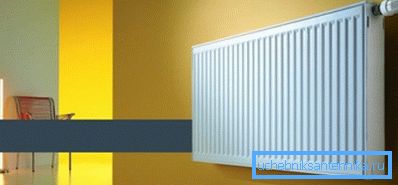
Most often choose either steel or bimetallic radiator. Why exactly such a struggle goes between them, we will now tell.
So, there are several reasons for disputes:
- Steel heaters are represented by panels; they do not require additional installation or extension of sections; the kit also includes strapping and fastening elements. Simply put, install and connect. The same is in the bimetallic set, but there are design details;
Tip! An accordion from more than 10 sections is considered “flawed”, efficiency is lost in the extreme sections. It is recommended to use several small sets, if necessary, instead of one large one, and these are additional expenses.
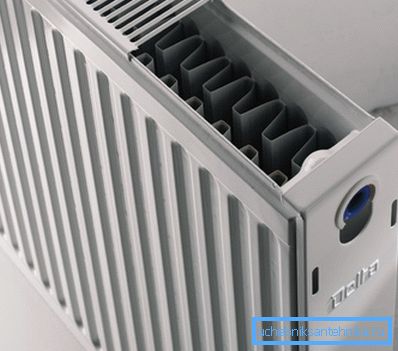
- Looking at the values of withstand pressure, the question of whether steel or bimetallic radiators are better is solved by itself. But such pressure, on which bimetals are designed, does not exist in the network, and for an autonomous - a steel product is quite enough. Do not forget - the price of bimetallic analogues will be much higher than steel;
- Although the stated service life differs visually, keep in mind that this indicator is calculated according to GOST standards for the coolant, in reality these figures may vary. In classic bimetallic batteries, the core is made of ordinary steel, with the same pluses and minuses of this material. The stainless steel, of course, will withstand much more and will last much longer, but the price load on it will be higher.

Tip! Solving the problem of which radiators are better - steel or bimetallic, we recommend to proceed from the parameters of expediency. In autonomous heating, steel panels will solve all your problems, for networks such products are unacceptable due to water hammer. That is the calculation.
Conclusion
The instruction with the comparative analysis came to an end. The problem of which bimetallic radiators are better is considered. However, when choosing heaters, we advise you to pay attention to the quality of the product, and the feasibility of its use.
After all, the same cast-iron batteries are operated for 4, 5. 6 decades without a shift and perfectly perform their functions. Buying bimetals for an autonomous system is just a reinsurance, and an expensive reinsurance.
The video in this article will bring some more visual recommendations, see!